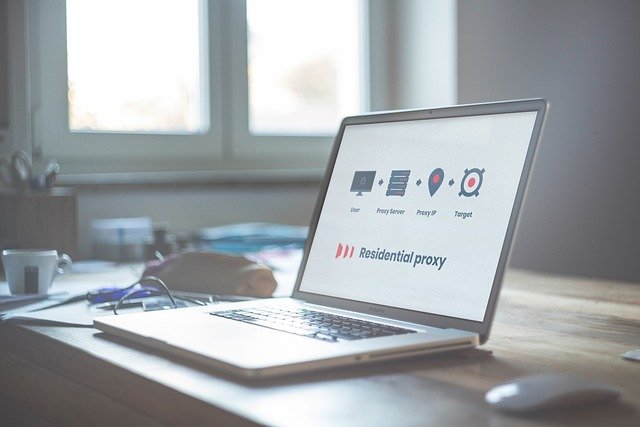I know we all are always trying to generate more quality backlinks to our website or a blog to get attention of search engines like Google so it will give more credit to your website and increase its authority over others in search result for a search query.
But we are neglecting to structure our website by building internal links which is important for our users and search engines like Google.
So I am writing this blog post for you to understand what is internal linking, why it is important and how to do it.
What is Internal Linking?
An Internal links are the links which connect one page of your website to another page of your website.
In an internal link source page and targeted page are of same domain or same website.
Internal links are essential for a website or a blog with more than one page. Crawler will go through internal links to find more content and index the updated or new content.
Internal links can be in anchor text, related searches tab, footer of the page, images, navigational links, content links. With internal linking we create a hierarchy to reflect which pages are important than other.
Every website has its own design and architecture which ensure easy access to information to users and crawler.
Ideally important pages should be linked directly through home page so users can get on that pages with minimum number of clicks. If it takes 10 clicks to reach certain content, it means that content is not really important.
The most important thing about internal linking is easy accessibility to all content.
Internal Linking is one of the important on page seo factors.
Now that we know what is internal linking..
Importance of internal linking:
Internal Linking helps to:
1. Ensure accessibility to all pages and documents for users and crawlers:
Because of interlinking users and crawler get access to all the content present on your site. Crawler crawls faster through interlinks on site doing indexation of updated or new content.
Due to this process your website ranks higher on search results.
As internal linking is good for crawler it is also best for your users. It provides value to user experience on your site.
A user reading one article on your website may be interested to read more articles so having good internal linking structure may help user to stay for more time on your website.
Indirectly due to internal linking user may turn up doing some CTA like email sign up or may buy a product.
As SEO is now all about user experience optimization.
2. It prioritize content:
Google decide page priority on the basis of quality and number of internal links pointing towards it.
Depending on your website you need to understand what is important from a business perspective.
For example if you have a digital marketing agency which provides digital marketing solution or services to clients, Service page will contain generic keywords and high search volume, sub services will have specific or long tail keywords which has low search volume than services page keywords.
From hierarchy and relevancy or priority perspective you should link mostly services page from homepage. If necessary you can also link sub service pages from homepage to indicate to Google that they are highly significant in the information architecture.
3. It helps to cluster content and distribute internal link juice:
Link Juice also known as Link Equity is search engine ranking factor based on idea that certain link passes value and authority from one page to another. Internal links pass link juice from one page to another.
To create a precise distribution of all available link juice to all important pages of a website one should use cluster pattern of internal linking.
From previous example of digital marketing services, to make Google understand cluster linking pattern, do linking from homepage to services and from services to sub-services.
Do not unnecessarily link services to other main services and sub-services cross content wise.
How to do internal linking:
Internal linking in HTML:
HTML links are hyperlinks.
An internal link is a simple string of HTML that links one website page to another.
Example: <a href=”https://techquisys.com/”>Visit our Digital marketing blog</a>
The href attribute specifies the website address (https://techquisys.com/) of the link.
The link text is the visible part (Visit our Digital marketing blog).
Clicking on the link text will send you to the specified address.
Anchor text:
While doing internal linking using anchor text make sure you use keyword phrases which describe what the page is about.
For example if wanted to link to article about Digital Marketing and Importance of SEO, then I will write
- What is the Importance of SEO in Digital Marketing.
In this example I am associating subject of the link with the phrase.
Do not create internal competition by using same anchor text linking to five different pages as it will be hard for Goggle crawler to differentiate which of them is actually the one url on your domain that’s supposed to rank for the given keyword.
Nofollow Links:
Do not use nofollow links for internal linking as it’s not a good sign. Nofollow links mean link equity or link juice of the source page will not be passed to targeted page.
Old Articles:
Use old articles to link to new articles. You can also update old articles with new and updated information.
So you can also use new article to generate interlink to old content , by doing this you can get both the content indexed and ranked.
Conclusion:
Interlinking is good for SEO.
Doing Technical SEO is more complicated and implementing it needs work and patience to get results.
Doing internal linking is easy and it provides good user experience. It also makes crawler work easy and fast if done properly.
Start implementing on your site and see your website traffic increasing.
Start with simple step like anchor text and see your website rank improving. Share your experience about the article and changes you see in your user behavior and website ranking.




